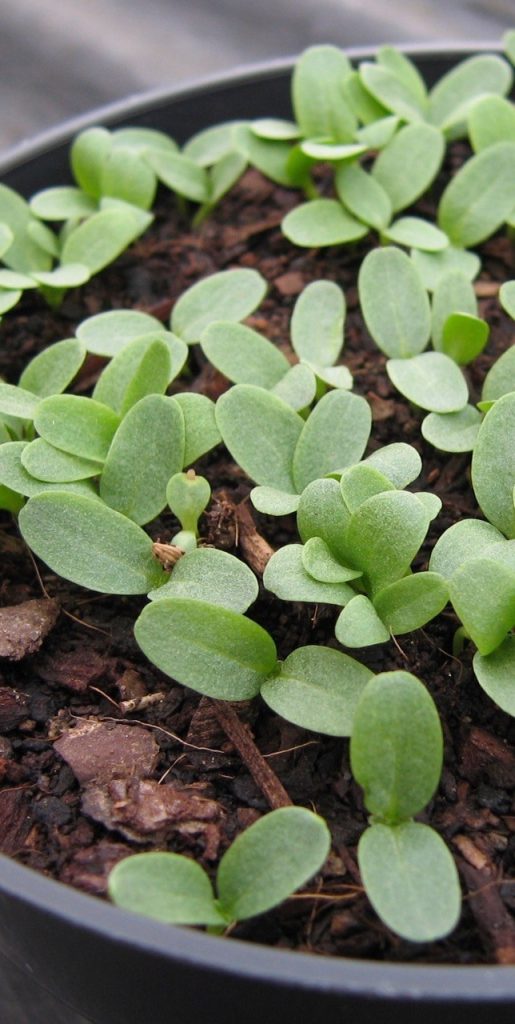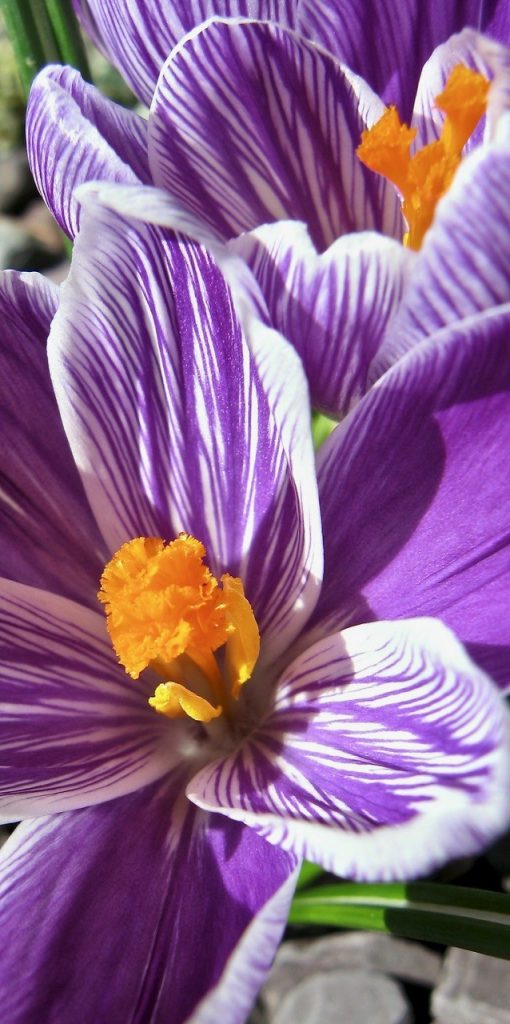As ecological crises mount, we need to take a closer and more honest look at what we’re doing in our gardens. It’s not as green out there as we think.
Red lights are flashing everywhere. Natural emergencies abound. A collapse here, a crash there, a pollution calamity unfolding (air, water), climate breakdown accelerating… the more we study and understand our own species’ effect on the living world, the worse it gets. Taking any positives on board, and seeing all the bright sides going, the trajectory still isn’t promising. Humankind’s impact on nature, on the life-sustaining systems around us, is huge – and rarely in a good way. We all co-exist on a planet under growing pressure, where resources are finite, and where the way we live has consequences for our neighbours, near and far, and for every other species on earth.

The gentle act of gardening, of growing things, is surely up there among the bright green sides? It’s about new life, about sowing and nurturing beauty from often tiny beginnings, about growing our own food for our own plates. It’s about being outside, in and among nature, finding relaxation, connection and peace. Gardening offers us respite from the pressures of life, from the ugliness in our world, a refuge in extraordinarily turbulent times. And it puts us, surely, on the side of the ecological angels. But simply by gardening, we are – painful as it is to say – adding to that growing turbulence.
I so wish we weren’t. I wish gardening was the deepest, squeakiest, purest shade of green going, beyond reproach – its good outweighing its bad countless times over. This beautiful, giving, enriching activity – which makes our world and our lives better – is giving me some restless, discomfited nights. Who’d have thought that gardening – gardening! – could sow bad dreams?
Don’t get me wrong; inherently, more good than bad comes through gardening (and there are plenty of other activities that do no good at all). It has the power to beautify the dullest corner, to give sanctuary to squeezed nature, and to enrich and transform human lives. It’s the closest many – if not most – of us will get to the natural world (I’m constantly amazed at how folk with zero interest in gardening stay sane). It gives us an enviable ability to do our bit towards tackling at least some emergencies, without having to be shown the way. Insect numbers crashing? Grow more flowers. Don’t want to poison bees? Buy organically-certified, pesticide-free plants. Not keen on polluting our soils and water supplies? Stop using chemical weedkillers. Alarmed by the unfolding global climate emergency? Well, this is where it all gets much trickier.

For a long while now, I’ve hoped that gardening’s green light would start flashing among the proliferating number of red ones, perhaps even outshining some of them. I’d imagined that this most people-friendly, accessible way of doing something ‘good’ in our world would shine through, green and bright. It seemed only natural that the industries, businesses, organisations, charities, celebrities and media, that together underpin, inform and feed our gardening hunger, would choose to redecorate, applying a proper lick of genuine green, rather than the usual tired greenwash. What we’re discovering, on an almost daily basis, about the impacts of how we live, will surely nudge them, if reluctantly, into doing the right thing. Right? Wrong.
Let’s start with gardening’s eternal shame: the use of nature-wrecking, peat-based compost, piled high now on pallets at almost every garden retailer in the land. We know that peat mining destroys habitat directly, and we know it releases fossil carbon stores. We know, from science, that carbon emissions are driving a global climate emergency, which destroys not just habitats, through extreme weather events, but people’s lives in far-off places we’ll never see. Gardening might not be a big hitter in the emissions game, but it’s still a hitter. Modern, quality peat-free composts are here, they work, and they’re renewable. It should be game over for peat, and yet it’s still scoring profitably at the checkout.
Decades of voluntary initiatives to end peat use in the UK have failed, and targets are endlessly postponed (the 2020 target for ending amateur sales of peat-based compost in England was quietly ditched many moons ago). Profit trumps emergency every time, and few challenge it. Our gardening media, neutered by its own need for profit (by accepting advertisements from businesses which flog peat), keeps shtum. Its so-called ‘journalists’ don’t know what the job’s about. Celebrities (bar a few), castrated by self-interest, will only wax lyrical about how tough it will be to grow this or that plant as our weather goes topsy, avoiding the reasons for climate breakdown like the plague (mindful, perhaps, of the next exotic cruise they’re leading…).

When compost-sellers are taken to task for selling peat-based mixes, their stock retort is, ‘We have a peat-free mix available, so customers have a choice.’ Ah yes, choice: the mother of all cop-outs. Firstly, the mix on offer might be a dud – much bandwagon peat-free is. Secondly, offering choice doesn’t stop peat being mined; it’s a delusional move by retailers to convince themselves that they’ve done the ‘right thing’. They’re wrong. The right thing would be – by choice – to stop selling peat-based composts. Job done. It would be one way for gardening to edge itself toward a genuine, ethically sound shade of green. For now, greenwash still rules.
But our peat shame is only one of gardening’s problems. Plastic, in all its shapes and forms, is still flooding from garden centres, and through our letterboxes. The best the UK horticulture industry has come up with, to try to solve the plant-pot-mountain crisis, is to, er, change the colour of the plastic. Taupe-coloured pots are apparently easier to recycle (where facilities exist), but that won’t stop them blowing away into our waterways, and washing out to sea – where they’ll join the microplastic fibres going down the drain after we wash our warm but tatty fleeces… When I stepped into a garden centre recently, plastic ruled the shelves. Non-plastic choices were limited, pricey and often impractical.
Perhaps the bigggest elephant in the garden – which we’ve all been avoiding, myself included – is how we actually get to visit other gardens, public and private. Most ‘destination’ gardens (and national gardening shows) aren’t noted for their public transport links, many being as remote as it gets. So we hit the road on four wheels, when studies into the harm done by vehicle pollution are ringing alarm bells globally. It’s not just the climate-altering exhaust emissions; particulates from brake pads and tyres, and the noise pollution from traffic, are all part of what we’re discovering is a toxic mix, especially for those still growing. There’s little sign of gardening organisations facing up to this reality – and, in fairness, it’s a tough ask.
But sidestepping the elephant, by rolling out ‘choice’ as the answer, won’t cut it. A few determined folk on bicycles or tandems, crammed into taxis, or running to catch a bus or train (if they’re able-bodied) isn’t problem solved; some of our most famous gardens (and shows) have sprawling car parks stretching as far as the eye can see. And for now, only a minority of people can afford zero-emission electric cars (and those still have tyres and brake pads…). But if good gardening is going to outweigh the bad – if the green gardening light is going to shine bright – hard questions must be asked.
Of course, one sure way to turn red into green is to spend more time in your own garden or greenhouse, potting up peat-free, and less out on the pot-holed tarmac. And yet there’s something about visiting a garden, about the anticipation of not knowing what you’ll discover, about wondering what ideas are there to be snatched, and what new plants you might bring home, that’s utterly irresistible. What a pity there’s no green button on the dashboard marked ‘good carbon emissions’.
If gardening really wants to sit alongside the ecological angels, if it’s going to be that true refuge from a turbulent world, it needs to re-colour itself – with a deep, enduring shade of green.
Text and images © John Walker
Find John on Twitter @earthFgardener


